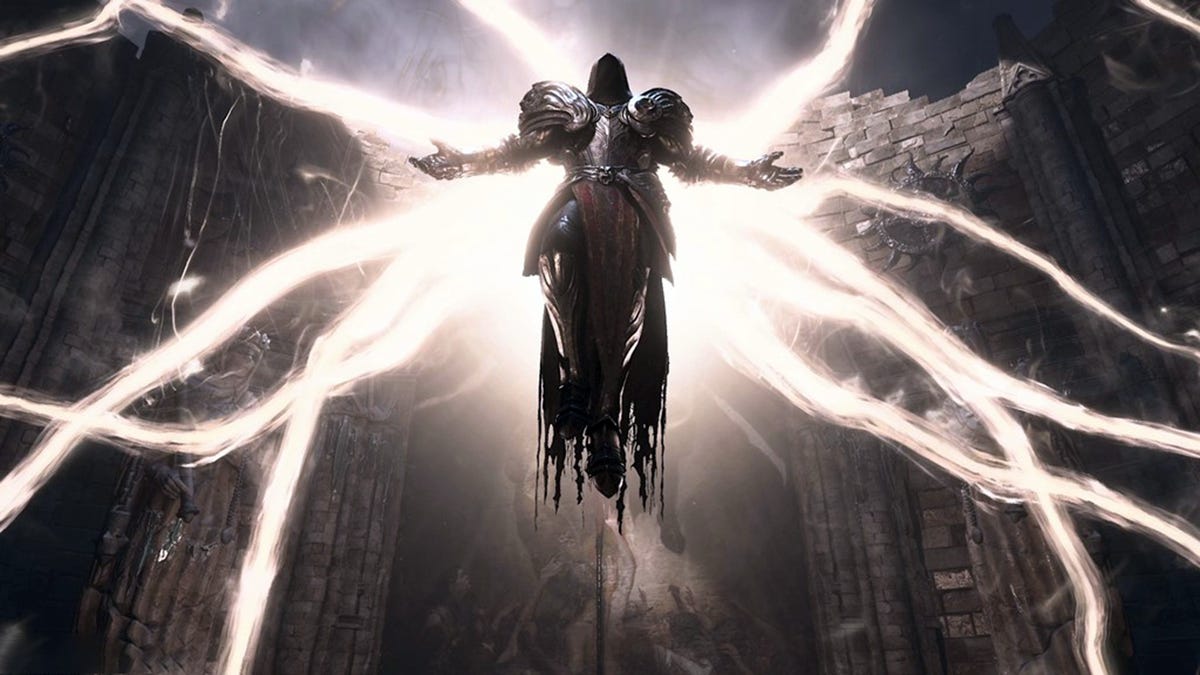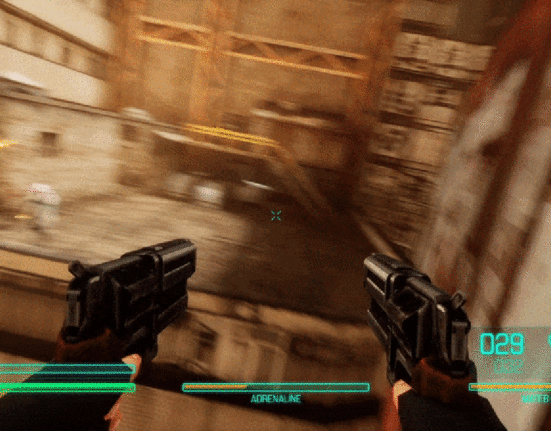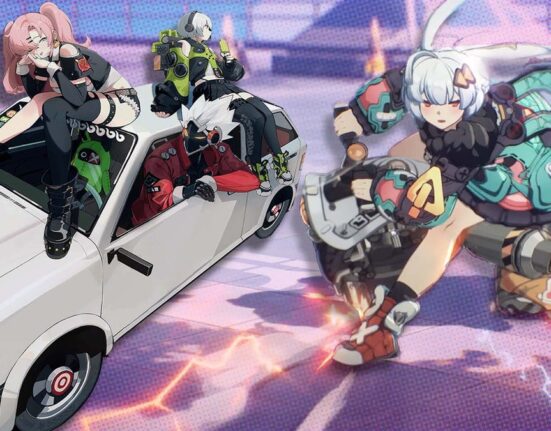Diablo is one of those games you’ve definitely played—even if you haven’t. It’s so influential in its design, from its RPG mechanics to its loot and progression systems, that the franchise has its demonic horns stabbed through countless other games from Borderlands and Destiny to Hades and Phantasy Star Online. Me, I’m not a statistician, and have never a big fan of exhaustively min-maxing stats to fine-tune my characters. I just wanna kill shit. But after a handful of hours with the Diablo IV beta, I’ve not only found the groove to settle into the game’s potentially limitless grind, but I’ve also become enamored with the idea of winding down to the mindlessness of it all. This is a podcast game, and I had a devilishly solid time.
Read More: Report: Diablo IV Devs Say June Release Date Will Lead To More Crunch
Diablo IV is the latest grind-playing game (GPG) in Blizzard’s long-running demon-slaying series. It drops on June 6 for every major platform except the Nintendo Switch (though it would be perf on that handheld-console hybrid). Picking up 30 years after the events of Diablo III, this fourth entry follows your created character as they hunt down the Daughter of Hatred, Lilith, whom cultists have summoned from the fiery depths of hell to reign as Mommy Succubus. It’s an evocative narrative themed around anguish and hate as humanity in the world of Sanctuary look for, erm, sanctuary amongst the fiend-infested lands. So, in an effort to end the war raging between angels and devils, you pick up your weapons and head out to slay demons in caverns, dungeons, and graveyards.
Battling with the demons
Combat in Diablo IV, much like in previous chapters, is an active waiting game as you toss out abilities and stand by waiting for cooldown timers to expire. There’s an interesting mix of active and passive skills that let you prioritize crowd control or single-target damage, but most of your time will be spent spamming basic attacks while your abilities come back online. That’s not a bad thing, especially since general melee and ranged combat is responsive and simple (I played on PS5 using the DualSense gamepad). It’s also awesome building out a character whose active and passive skills have solid synergies, like a rogue who gains buffs whenever debuffing an enemy or a barbarian who grows stronger with every kill. In this way, the game is incredibly easy for newcomers like myself to get into and, I’m sure, for veterans to rediscover their grooves.
G/O Media may get a commission
Though simple it may be, Diablo IV isn’t necessarily an easy game. There are plenty of hard trash mobs and bosses begging to send you to hell, many of which can do so in just a few attacks if you aren’t paying attention. Across Sanctuary, from its frozen tundras to its craggy mountains, are also difficult (and repeatable) world events tasking you with killing a specific enemy, surviving for a specific amount of time, or protecting a certain NPC. Arduous tasks like these go a long way in providing some challenge while also forcing you to think a bit about how to best use your limited abilities. If you’re looking for an even greater challenge, you can adjust the game’s difficulty through the World Tier system, a global difficulty setting that increases your experience and gold gains while making enemies tougher. And if that’s not enough, you can extend your stay in hell forever with Hardcore Mode, a difficulty option that permanently kills your character should you die but also rewards you with more experience, tons of gold, and better loot until you do.
The grind is worth the time
Thankfully, you don’t just have to accept fate, take a blade to the heart, and die forever, because loot in Diablo IV is both exciting and plentiful. Yeah, there’s a rarity system to get lost in and enough numbers to make a statistician drool, but collecting new gear is super gratifying, especially after a long battle with a hulking demonic warrior. Just about everything you do, from simple exploration to involved questlines, rewards you with loot. Whether that’s a new weapon, another piece of gear in an armor set you’re hunting, or a random accessory with some amazing bonuses (like extra dodge rolls), the loot is always worth the trouble. Even if what you pick up isn’t for your class, you can sell or salvage those pieces for resources to improve what you have at the blacksmith. It sounds cliché to say there’s something for everyone, but it’s true here.
Nowhere is this more apparent than in the game’s RPG systems. There are five classes to choose from—barbarian, druid, necromancer, rogue, and sorceress—each with their own buffs, equipment, stats, and the like. But in those five classes are specializations allowing you to differentiate your character from your friend’s. In my case, I started as a general rogue who excelled at getting in to do some melee combos before getting out to lob some arrows. After a few levels, I honed in on what I’m calling a shadow rogue, which specializes in high-damaging debuffs and stealth to get quick kills from the shadows before engaging in melee combat.
That wasn’t what I was going for off the rip; it’s what I stumbled upon through character experimentation, which the game makes easy to do by a pretty inexpensive and always accessible respec mechanic. So, if you’d rather be an agile barbarian instead of a tank, you can do that. Similarly, if you want to play as a tanky sorcerer, you can do that, too. And you can always switch things up if something isn’t working or if you’d prefer to go in a different direction. This is a godsend. You aren’t locked into one particular playstyle after choosing your class. Rather, it’s all about finding the best gear and skills that match the way you’d like to play, then continually optimizing that for greater efficiency.

An RPG to shut your brain off to
This is where I find enjoyment, constant experimentation via the simple respec mechanic. By making tweaks within the skill tree, I landed on a build that fit my playstyle perfectly. It might sound tedious, reading skill descriptions ad nauseam, but there’s something comforting and relaxing about slowing down to take in Diablo IV. There’s a lot of jargon to parse through, some of which isn’t explained all that well. But in truth, most of the game’s minutiae isn’t of the utmost importance. As long as you know to make the numbers go up, and the game does a good enough job of illustrating what makes the numbers go up, then you’re solid.
In that regard, Diablo IV is a great game to wind down to at the end of the day. Its gameplay isn’t too demanding in the same way something like Elden Ring’s is, and its narrative doesn’t require too much attention like God of War Ragnarök’s does. That’s not to say it’s basic or uninteresting. Far from it, actually. It’s just this is the kind of RPG you can play through while a podcast is going, a mindless rampage of exorcizing demons that’s also rewarding and satisfying. To put it another way, Diablo IV is the perfect game to turn your brain off to.
Read More: Enormous Diablo IV Leak Shows Almost 45 Minutes Of Dungeon Crawling Footage
All that said, the only two real bummers I’ve found during my time with Diablo IV’s beta is the obnoxiously long dodge roll cooldown timer (five seconds is too long to wait to evade again) and the fact that nothing you accomplish here will carry over to the full game. That last fact hurts a lot. I’ve put a good amount of time into my shadow rogue. Oh well, though. I’m looking forward to grinding through some podcasts while grinding up my character again when the full game comes out this June.







Leave feedback about this